This is my second article about plants and it focuses on plants that purify the air from different gases released indoors.
As I mentioned in the first article, the pollution inside the house is four times greater than the air pollution outside, it’s official name is IAP (indoor air pollution).
Those gases are released all over the house, but I believe that the living room may contain a larger quantity.
The living room is the location in the house where a majority of outgassing materials may more typically be present, located in the furniture and textile. As I will note, these may be made of materials that contain toxic gases.
Nowadays most smokers smoke outside the house, but I guess if you do smoke indoors, it is done in the living room. In addition, the living room is the main room in the house, and therefore also the most heated or cooled. If you have a gas fireplace or wood burning it also adds to the internal pollution. Newspapers, books, and clothing items may also emit toxic gases.
In order to understand how polluted our house is and how important it is to have air purifying plants I’ll mention some of those gases here:
Formaldehyde is a colorless gas with a pungent odor used in industry to produce building materials and house hold products. The formaldehyde can be released from cigarette smoke, wallpaper, wall paint, varnish, curtains, many glue sorts found in particleboard, MDF and certain carpets (less than 2 years old).
Formaldehyde can cause eye and throat burns, headaches, asthma attacks in asthmatics, fatigue, allergic reactions, and may even cause cancer.
Benzene is found in some plastics, fabrics, pesticides, cigarette smoke and ink.
Trichlorethylene or TCE molecules is so dangerous to our health that it is forbidden to use in the private sector. It is mostly now found in specialised dry cleaning and some printed material.
Xylene is a toxic solvent and Volatile Organic Compound (VOC). It is found naturally in crude oil, and is produced from oil in the petrochemical industry. Xylene’s main use is as a solvent in the printing, rubber and leather industries. In most cases, its concentration inside the house is much higher than its concentration outside the house (up to 10 times) because it is also found in many common household products such as wood varnish, paint thinners, paints, adhesives, rust preventers, gasoline, and permanent magic markers. In smaller quantities it is used in the chemical industry, in the plastics industry, in the production of synthetic fibers, and in the coating of fabrics and paper.
The health damage caused by contact with volatile organic compounds varies according to their types and concentration: from skin, eye or throat irritation, headaches, nausea, fatigue, to damage to the liver, kidneys, nervous system and even the development of cancer.
Indoor sources of Toluene include building materials (e.g., solvent- and water-based adhesives, floor coverings, paint, chipboard), consumer and automotive products (cleaners, polishes, adhesive products, oils, greases, lubricants), and environmental tobacco smoke. It is used for dissolving artificial resins, paints, inks, varnishes, rubbers, etc.
In attached garages, toluene is generated by running engines.
Inhalation of Toluene vapor can be fatal. Low levels of exposure cause fatigue, confusion, weakness, intoxication-like behavior, memory loss, nausea, loss of appetite, loss of color vision and hearing. These symptoms pass at the end of exposure. Inhaling a large amount can cause loss of consciousness and death. Prolonged inhalation of toluene may impair kidney function.
1. Chlorophytum (Spider plant)
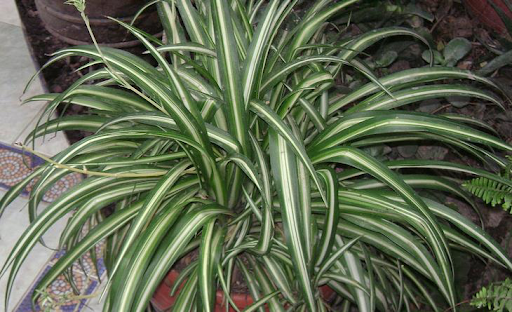
Originating from Africa, Australia, and Asia, there are about 200 different varieties of Chlorophytum.
The plant has the ability to dispose of formaldehyde molecules as it simultaneously enriches the air with moisture, which is especially important if you are regularly using air conditioner or heating.
Spider Plant does more than just filter out benzene, toluene, formaldehyde and xylene from the air. It actually helps to scrub the air, too. The wax on the leaves of Spider Plants can trap tiny particulate matter, such as dust, mold and smoke that is in the air.
2. Dracaena reflexa:
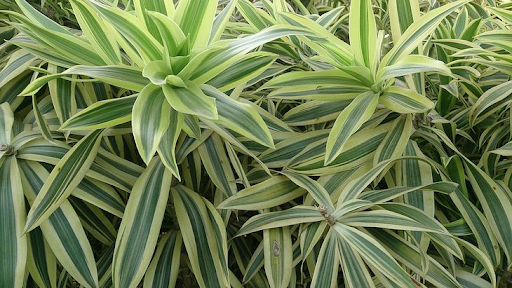
The Dracaena reflexa is a plant that comes from Madagascar, Zimbabwe and Mauritius, and it has evergreen and richly colored leaves. It also helps purify the air of formaldehyde molecules.
Ficus benjamina (Weeping fig)
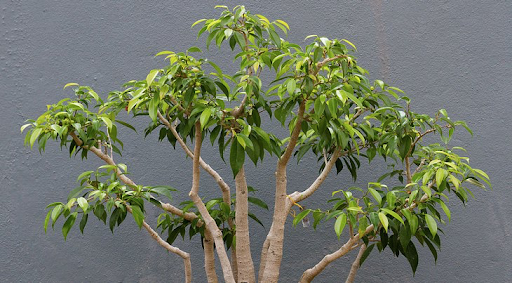
The green Ficus benjamina comes to us from Asia and Australia, and is considered the official tree of the city of Bangkok in Thailand. The green ficus is an excellent air filter.
It can clean the air from harmful trichlorethylene molecules, formaldehyde, xylene and toluene.
If you live near a busy road you can put a Ficus benjamina near the entrance door or window facing that road and it will absorb the gases emitted from the passing cars.
I choose to place the green Ficus benjamina in this list but it can be just as well in a narrow, dark corridor or bathroom as it is especially good in dark places.
4. Epipremnum aureum (Devil Ivy / Golden Pothos):
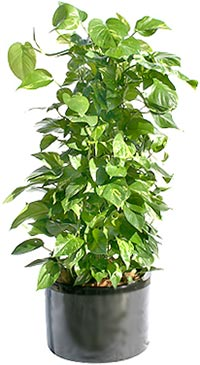
The fast-growing branches of the Devil ivy produce a cascade that falls like a green waterfall from a hanging plant.
According to a NASA report it is one of the best all-around air-cleansing performers, removing 73% of benzene and 9.2% of TCE from a sealed experimental chamber in a 24-hour period. No waste materials are released. The purification system goes even further and updates itself.
Another significant advantage of this plant is that it remains green even when it is kept in the dark and is VERY easy to maintain. With very little care, your Devil Ivy will grow and grow and grow, limited only by the amount of sunlight you have and the size of your pot.
5. Bamboo Palm
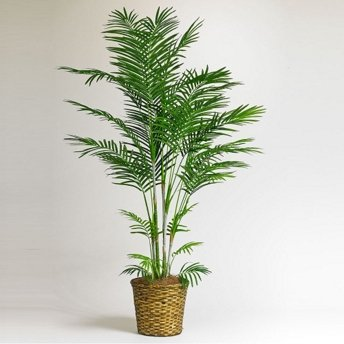
This small palm tree thrives in closed spaces and often produces small flowers and fruits.
This plant is also at the top of the list as one of the best plants for filtering benzene and ethylene trichloride. It is also a good choice to place around furniture that emits formaldehyde.
If you have more interesting information regarding those plants or other plants that can be valuable in the kitchen I would love to hear about it in the comments.
